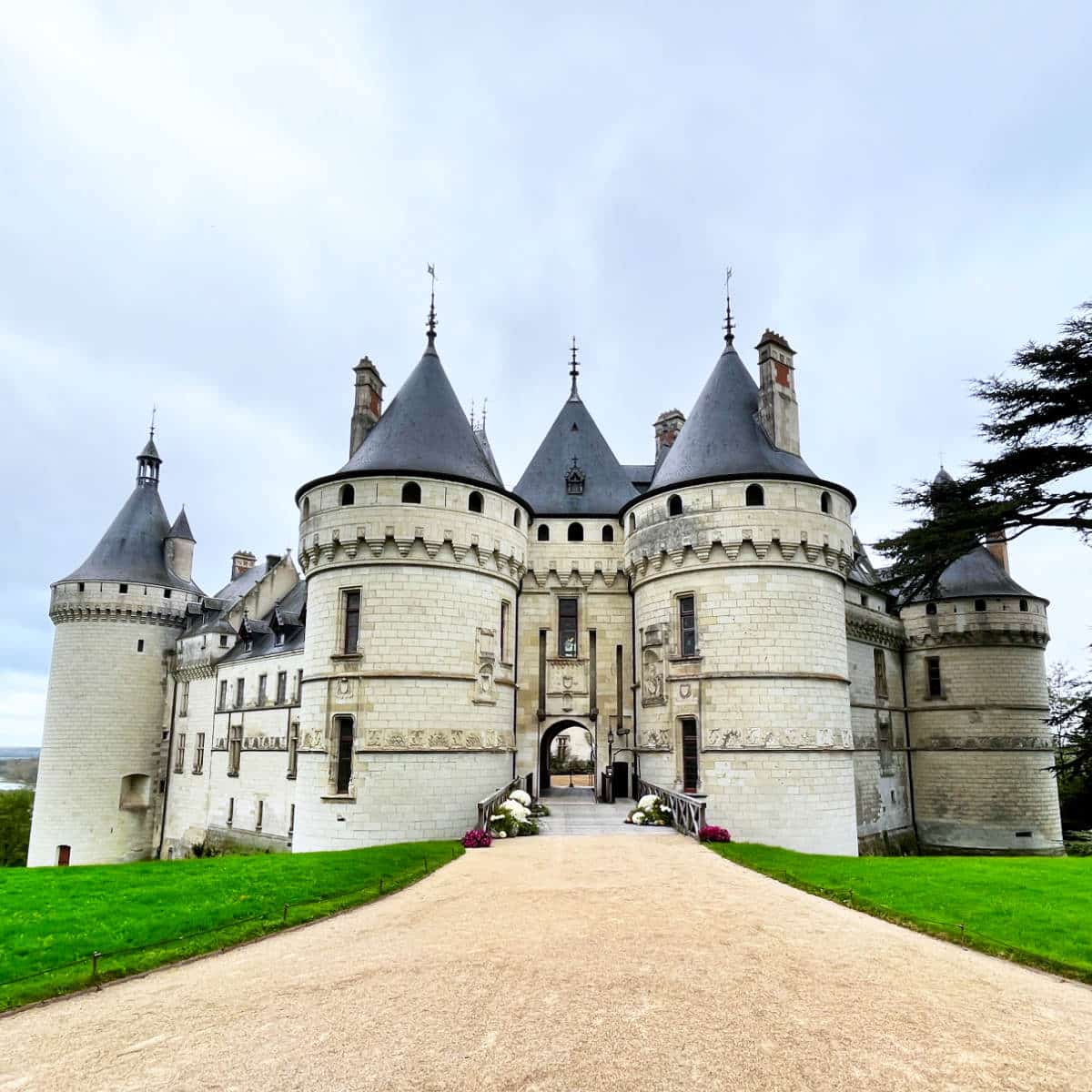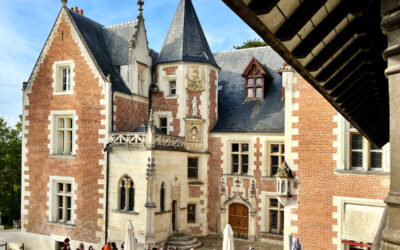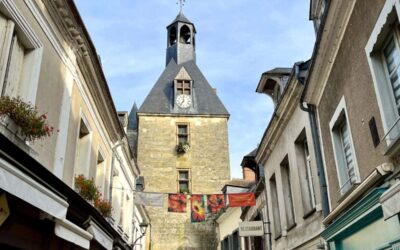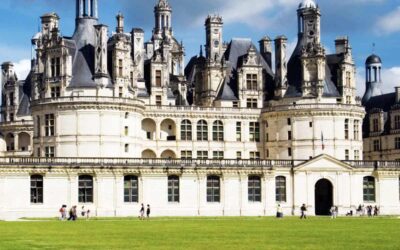The Château de Chaumont-sur-Loire is like a castle out of a fairytale. With its round defensive towers and imposingly tall walls, it is a castle that will transport you back to the Middle Ages.
The name Chaumont derives from the French “chauve mont“, meaning “bald hill.” Unlike some of the other Renaissance châteaux of the Loire Valley, the Château de Chaumont is much older and built for function rather than entertaining.
But Château de Chaumont-sur-Loire is perhaps most famous for the being the place Queen Catherine de Medici banished her husband’s mistress Diane de Poitiers after his death.
It is a few miles from the Loire river near other famous châteaux in the area like Château de Chenonceau, Château de Cheverny, Château de Chaumont, and Château de Chambord, near the cities of Amboise and Blois. It is about 3 hours away from Paris, making it ideal for a day trip from the city.
So let’s explore how the Château de Chaumont-sur-Loire came to be and what to see inside, shall we? Allons-y!
History
The first castle here was built by Odo I, Count of Blois, dating back to the 10th century. It stood on a tall hill looking down at the the river Loire, ready to protect the town of Chaumont.
In 1465, King Louis XI seized the Château from nobleman Pierre d’Amboise and ordered in razed as punishment for its owner’s rebellion against its rule. It was later rebuilt by Pierre’s son and grandson. This is mostly the castle we see today.
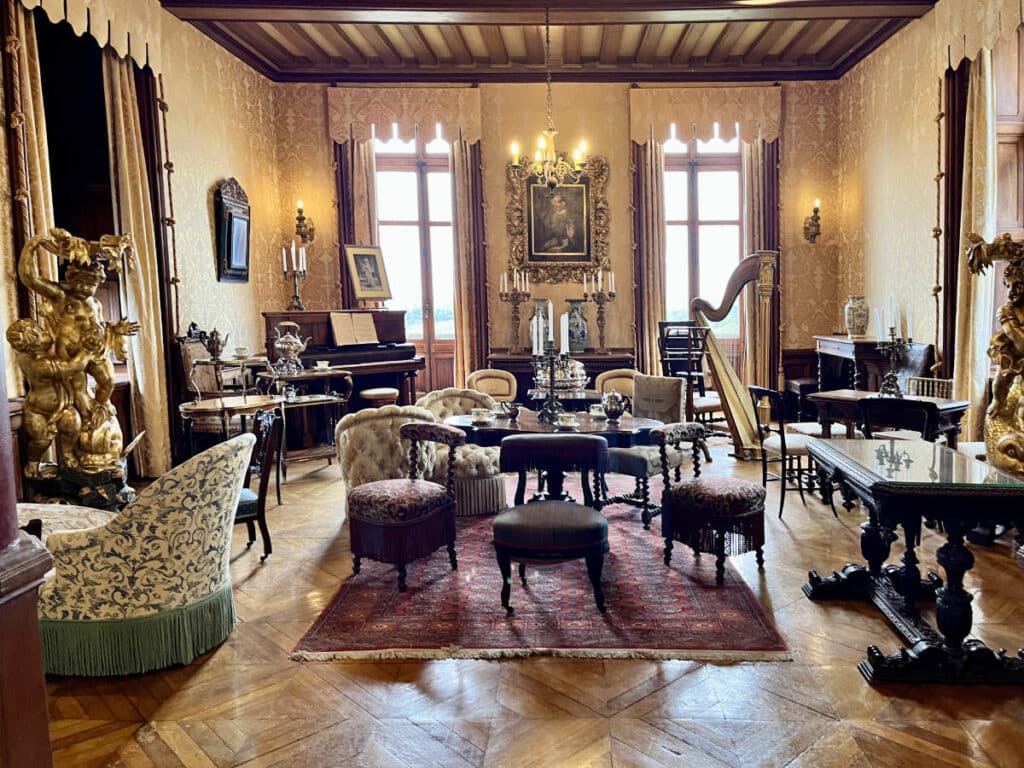
On March 31, 1550, Queen Catherine de Medici bought the castle from the Amboise family for the sum of 120,000 livres (the currency of the day).
The Château became famous when King Henri II died and Queen Catherine de Medicis forced her husband’s mistress Diane de Poitiers to move here instead and give up the Château de Chenonceau.
Chenonceau had been given to Diane as a gift, and Catherine did wait to seize it back as soon as she became regent on behalf of her underage son. Diane did not live here for long, and the château passed from her family to a variety of other hands.
It was eventually donated to the French government by the De Broglie family in 1938 and is today designated as a historic monument. The Loire Valley châteaux like Chaumont are officially recognized on the UNESCO world heritage list.
Inside the Château
Inside the Château de Chaumont, there are several reception rooms and bedrooms are lavishly decorated.
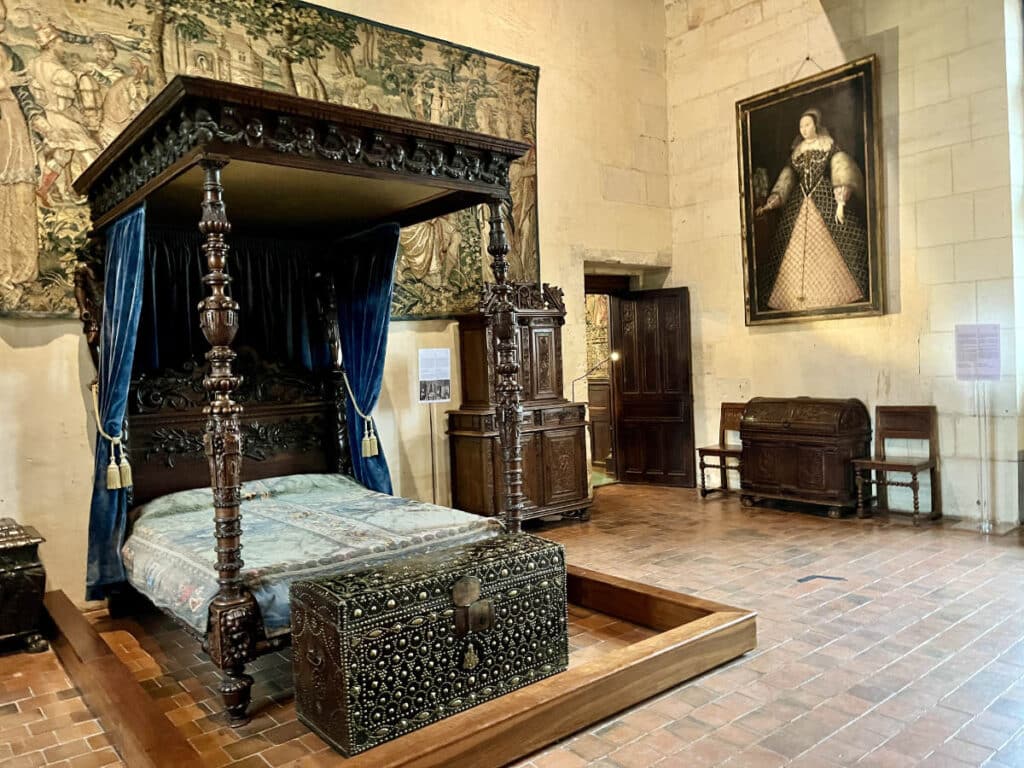
This so called “Catherine de Medicis” room is named as such to commemorate the acquisition of the Château by the French Queen Catherine de Medici in 1550. In the far corner, you can see a portrait of her, as a dedication.
Other rooms include the Council chamber and guard rooms, and the large spiral staircase, in the same style as that at Château de Blois.
Along the walls of the château, you can see more recent photos taken by the Duke of De Broglie’s family who owned it in the 19th and 20th centuries. The ducal family entertained many foreign nobles at the castle, hosting large parties at the castle. Photos of Indian maharajas and European bourgeoisie line the castle walls.
Stables and outbuildings
After leaving the main building of the Château de Chaumont, you will come to a large set of stables. One side of the stables was set aside for the residents of the château, and another for the visitors.
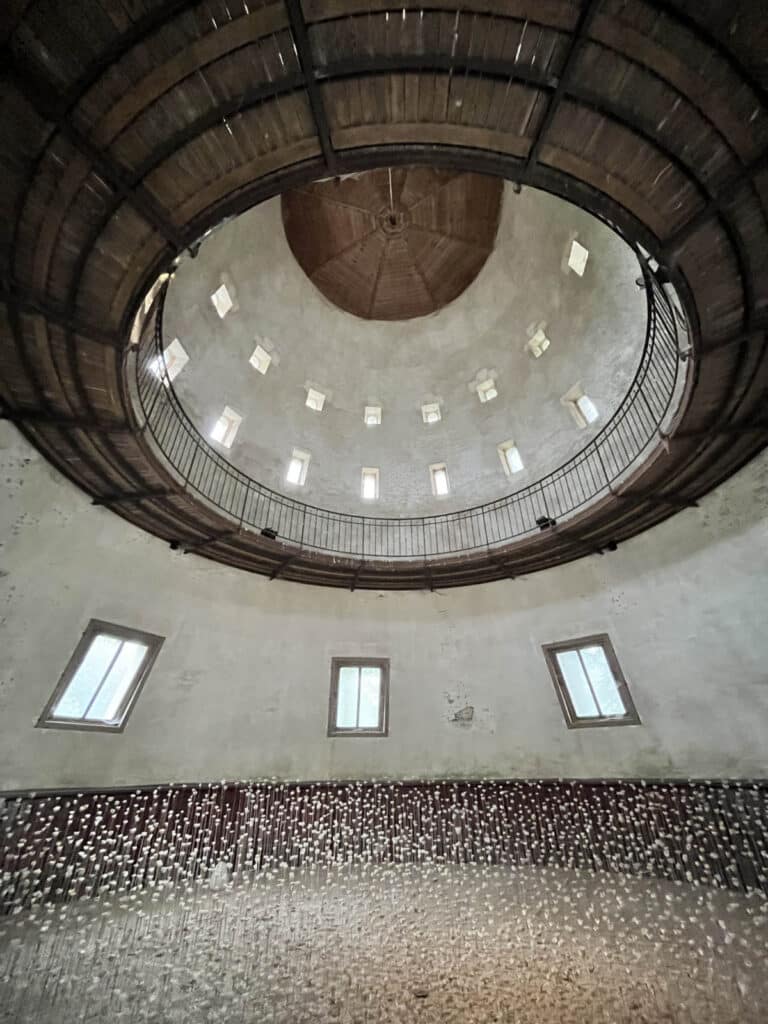
The stables were built in the 19th century in a brick and stone ensemble. There are various carriages in the different stables, as well as art installations in some of the boxes.
The Gardens
These days, the Château de Chaumont is most famous for its beautiful gardens and garden festivals. In a large and expansive park, small individual gardens have been set up with professional expert gardeners invited to construct and plant as they see fit.
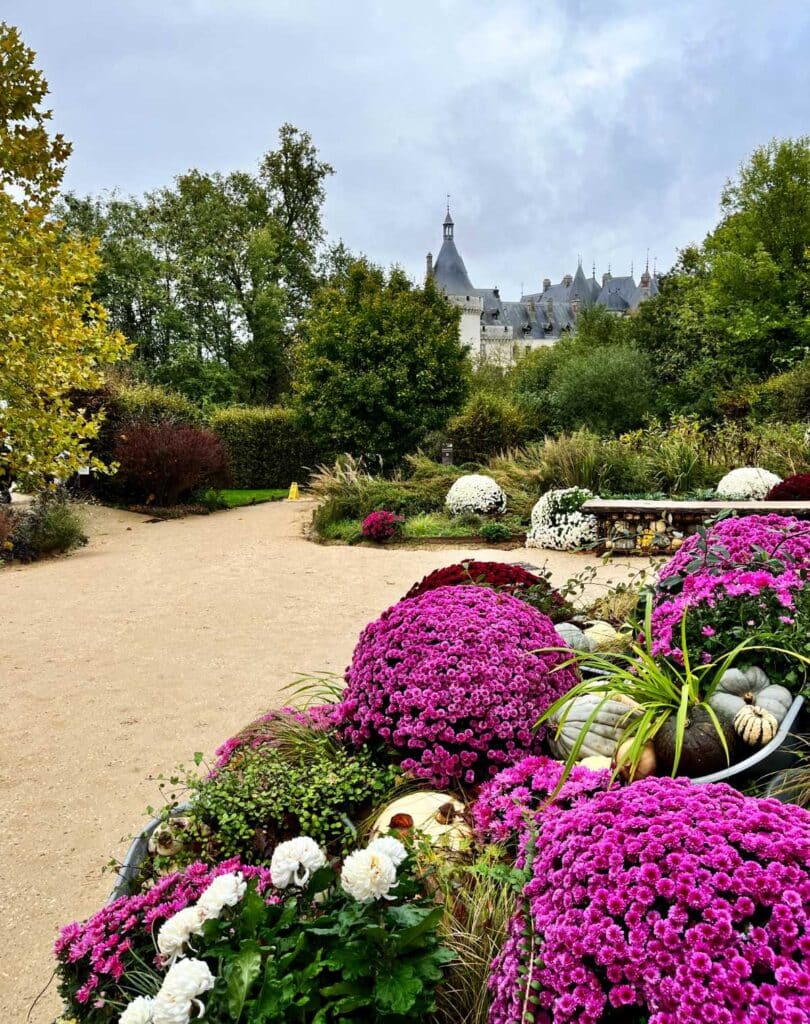
As such, there are 20+ different gardens, each in a different style and different esthetic. The ambling alleyways between the gardens make for a beautiful pathways leading from one to the other, an excellent way to spend an afternoon.
Some of the gardens are changed every year and events held here. There is also a café in a large greenhouse, if you wish to get a bite to eat.
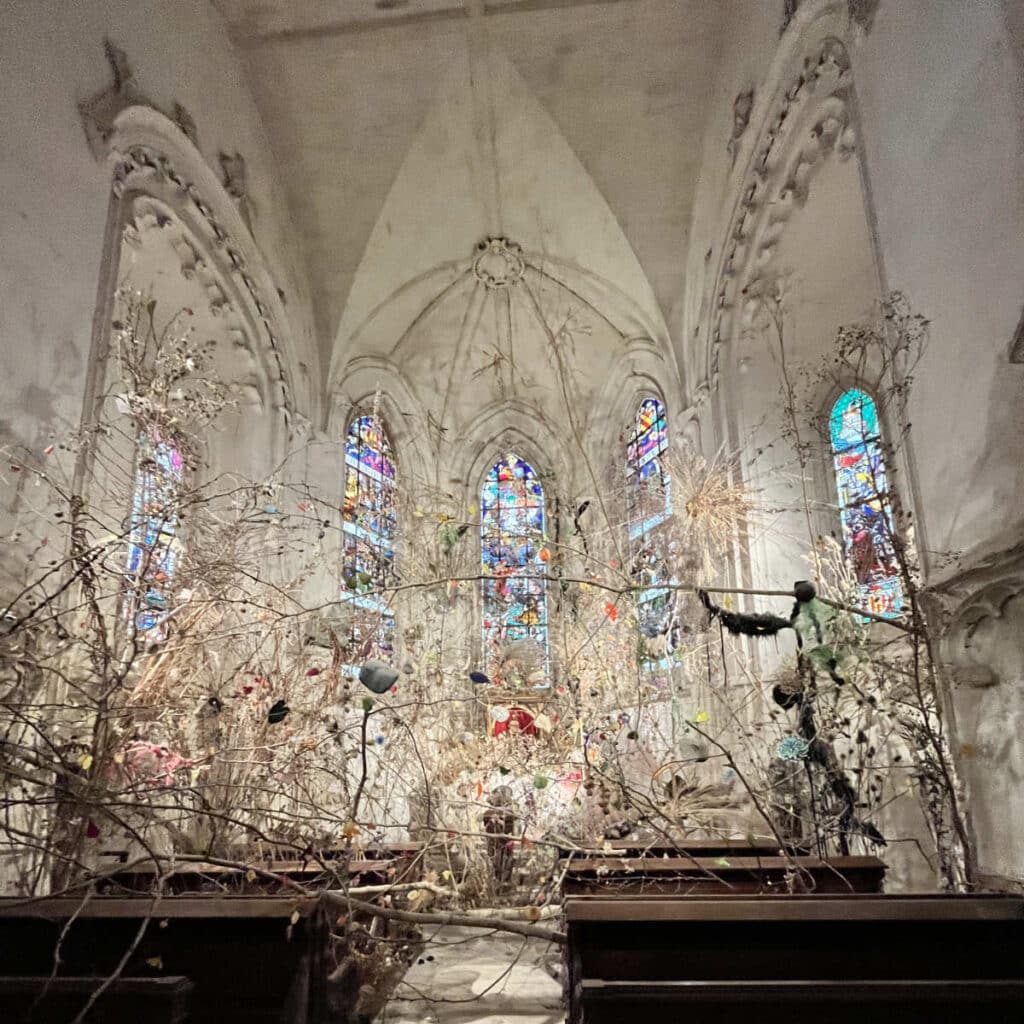
How to get there?
There are also various tour options leaving from Paris, which will have you there and back in style. The Loire is one of the big French wine regions, so certain tours combine wine-tasting and sightseeing. You can see the tour options to the Château de Chaumont here.
How easy is it getting around?
The town of Chaumont-sur-Loire is quite walkable, however the Château de Chaumont is located on a hill overlooking the city. To get to the main entrance of the Château, visitors have to walk up the hill or move their cars and park in the parking lot that is at the Château entrance.
Where to stay?
The Château de Chaumont is located about 20 minutes from the city of Blois and about 25 minutes away from Amboise. Some recommended hotels are:
In Blois:
- €€€ – ibis Blois Centre Château
- €€€€ – Hotel Mercure Blois Centre (with pool)
- €€€€€ – Fleur de Loire (on the quai across from the old city center of Blois)
In Amboise:

If you enjoyed that article, you may like to read more about traveling around the Loire Valley. A bientôt!
